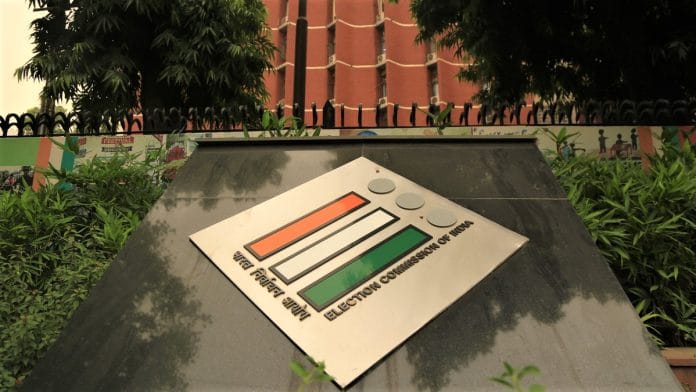Thank you dear subscribers, we are overwhelmed with your response.
Your Turn is a unique section from ThePrint featuring points of view from its subscribers. If you are a subscriber, have a point of view, please send it to us. If not, do subscribe here: https://englishdev.theprint.in/subscribe/
EVM, VVPAT and Ballot Paper
The Election Commission of India (ECI), as a guardian of elections, is required to periodically conduct FREE & FAIR elections to the Parliament and the State Assembly (Article 324 of the Constitution). A free election is one where all registered voters can freely exercise their franchise without any fear or duress. Whereas a fair election is one where all votes have equal influence on the outcome of the election results and where all the votes polled are correctly tallied. Therefore, ECI ensures that the voters have access to reliable information, polling place, intimidation/fraud free voting, etc., and it announces correct results after counting the ballots accurately. Any deficiency/deviation is constituted as not having conducted the underlying election as “Free & Fair election.”
- At present elections in India to elect a public representative for Parliament and the State Legislatures are conducted through the Electronic Voting Machine (EVM). Of late, many Political Parties and general public have raised their voice that the elections through EVMs cannot be conducted in a “free and fair” manner as these machines can be manipulated through physical intervention and/or hacking mechanism. They argue that many developed countries have already discarded conducting elections through the EVMs and resorted back to the system of “ballot paper.”
- Now there are two options with ECI either to discard use of EVMs and go back to the system of ballot paper or continue use of EVMs despite resistance. Constitutionally, ECI is supreme in taking a call. However, it must always be kept in mind that ECI is duty bound to conduct free and fair elections, which must not only be so in its own consideration but also it must prove its creditability that it had conducted such elections without any doubt, exhibiting its accountability to the voters, tax payers and general public. If doubts are repeatedly raised and technically manipulation is possible, ECI may consider reverting back to ballot paper system. There may be some apprehensions that it might take more time to count votes polled. But if free and fair elections are to be conducted beyond any doubt, more time consumption should not matter. Afterall India has huge workforce and can wait for some more time.
- One by one all political parties have raised their doubts about EVMs. The current ruling party (BJP) had been the first to raise such doubts when it was in opposition. So, why should ECI wait and keep the blame on itself, especially when it does not have any political ambition of its own being a Constitutional body. Whereas the BJP, which rightly has political ambition, should also not oppose going back to the ballot paper system as it has stated to have done lots of decent work which would definitely bring it back to power. By doing so, it can easily slap those opposing EVMs. There cannot be any other apprehension for BJP.
- In times of political mudslinging about EVM tampering, a paper trail ensures that voter faith remains intact to strengthen participatory democracy. That is why a system of providing feedback to voters using a ballot less votingsystem has been introduced through the Voter Verifiable Paper Audit Trail (VVPAT) or Verified Paper Record (VPR). If everything is so accurate and beyond tampering-doubt, why was this system of VVPAT introduced by ECI? It suggests that ‘doubt’ is definitely there.
- Apart from matching the number of votes polled with the number of connected VVPATs, ECI may keep in mind that:
- A large number of Indian voters, especially women and old aged persons hailing from the poor, rural & forest background, are illiterate and that is why the “Election Symbol” allocated by the ECI is also printed on the ballot paper or EVM alongside the name of the contesting candidate. Such voters may not find it easy to verify with VVPAT as expected.
- 7 seconds allotted to verify casting of intended vote with VVPAT, seems not sufficient to such voters. They may even forget to verify this additional activity for which they are not practically trained. Further, the possibility of the VVPAT Status Display Unit (VSDU) not exhibiting cast-vote properly due to its overlooking glass being unclear/unclean or its battery power may be weak in due course of use on entire polling day.
- Even if some of such voters are able to verify and notice discrepancy, they may not be able to bring to the notice of the pooling booth officials, within a short span of time and come out despite. Moreover, every voter may not point out noticed-discrepancy under fear and duress for being singled out to face repercussions, as the cast-vote shall not remain secret.
Hence, Constitutional bodies like ECI and the Hon’ble Supreme Court may take cognizance ensuring fairness in conduct of elections.
These pieces are being published as they have been received – they have not been edited/fact-checked by ThePrint.


